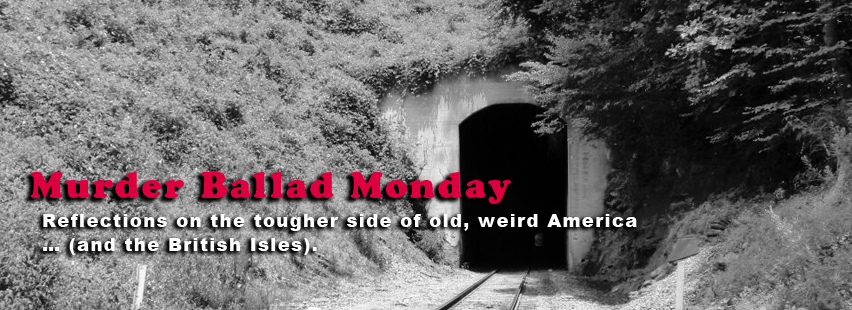The Truth to You I’ll Tell – “Little Glass of Wine”
<<<Back to page 3
Coda – “I kissed thee ere I killed thee, no way but this…”
Let’s use Williams’s advice to get started with our conclusion. Just what kind of materials are we dealing with here? What significance can we derive by understanding the nature of the traditional singers who passed on and preserved this ballad?
We’ll start with the first question. When I tell people that I write for a blog about “murder ballads,” they often get a funny look and have no idea what I mean. Sometimes though, they have a rough idea. This song is precisely the sort those folks imagine when they hear the term. Man kills woman – misogyny. If that slightly informed person is American, they are apt to associate murder ballads with bluegrass particularly. Hearing the Stanley Brothers lay it down would just reinforce another stereotype concerning the violent nature of mountain folk.
Our regular readers know that there is much more to the tradition than all that, and probably realize that murder ballads are in fact rather rare in bluegrass proper. But we sure as hell can’t avoid the stain of misogyny with this one! If you’ve read this far, you’ve probably checked out the lyrics. You see that this is almost as misogynistic as a traditional song can get. You could say it’s disgusting. This is a perfectly fair way to see the narrative. However, it’s a post-modern perspective. If you leave it at that, then there’s rather little value in truly hearing this song. I mean, why would you?
Let me put it another way. Why would traditional singers and listeners keep it alive? Why was it the case, as Carter mentions at the beginning of the late 1940’s WCYB Farm and Fun Time broadcast linked below, that “Little Glass of Wine” got more mail for the Stanleys than any other song? In fact, “Little Glass of Wine” provided, as Johnson found in his research, the most “significant… impact on the brothers’ careers” in those early days. With the help of radio, this song put them on the bluegrass map as much as any.
Why indeed? Let’s get back to the second question I derived from Williams before I answer. How does understanding traditional singers help us understand this ballad? I can think of at least two good reasons beyond ‘it’s good music’ and ‘it normalizes misogyny’ for all that mail that the Stanleys received, and indeed for all the persistent traditional examples of this 19th century song we find in the Anglophone world.
First, it’s quite clear that these ballads, whether intoned in Somerset, Kentucky or Somerset, England, are classic warning songs. That is, of course, one of the standard structures for a traditional murder ballad. In a few English versions, it’s a warning about loving across class lines – the man being a commoner and the woman of higher degree. In more iterations, class is dropped and it can be read as a warning against ‘going too far’ when young. But by far the most common formulation on both sides of the Atlantic is a warning about jealousy. We can all relate.
That’s not going to persuade some people that the song is worth keeping around. Such old-fashioned warnings may indeed just gloss over deeper misogyny. But let’s add a question to help bring a different perspective in to focus. Why would young artists like Eliza Carthy and The Dovetail Trio keep the song alive today? Is it really adequate to posit that this ballad lasted to this day simply because it reinforces misogynist norms, and that it is a dead example of old-world misogyny that needs to be buried and forgotten? I think not.
That brings me to the second reason I can see for this song’s staying power. There’s something unique going on here with regards to the specific phenomenon of murder-suicide, and I think it’s relevant both to post-modern and traditional performances. We deal with murder-suicide today mainly by making it news, politics, or dramatic visual fiction. We have psychologists and criminologists to study it academically as well. For all that, it still by and large mystifies and horrifies us because we can’t get a handle on it. But I found with just a little bit of research that, though rare, there’s nothing particularly new about murder-suicide. It’s been around for a good long time and it’s not unique to one culture. It’s no stretch then to imagine that Britons in Shakespeare’s time or in the early 18th century would have been as terrified and horrified by the phenomenon as Americans were before the Civil War or are today. No doubt, our ancestors contextualized their fears in different ways than we do. In the end, though, how do you deal with that sort of stress when there are no ‘experts’ to tell you what it means, no counselors to help you sort out your feelings, and no mass media fiction to engage your imagination on the subject?
I humbly suggest that singing was a damned good option. I think it still is. It is not enough, but it surely can help. Do you really think Eliza Carthy simply overlooked the misogyny in this ballad when she made your spine and skin tingle as you listened to her fiddle and sing?
Thanks for reading and listening this week folks!



